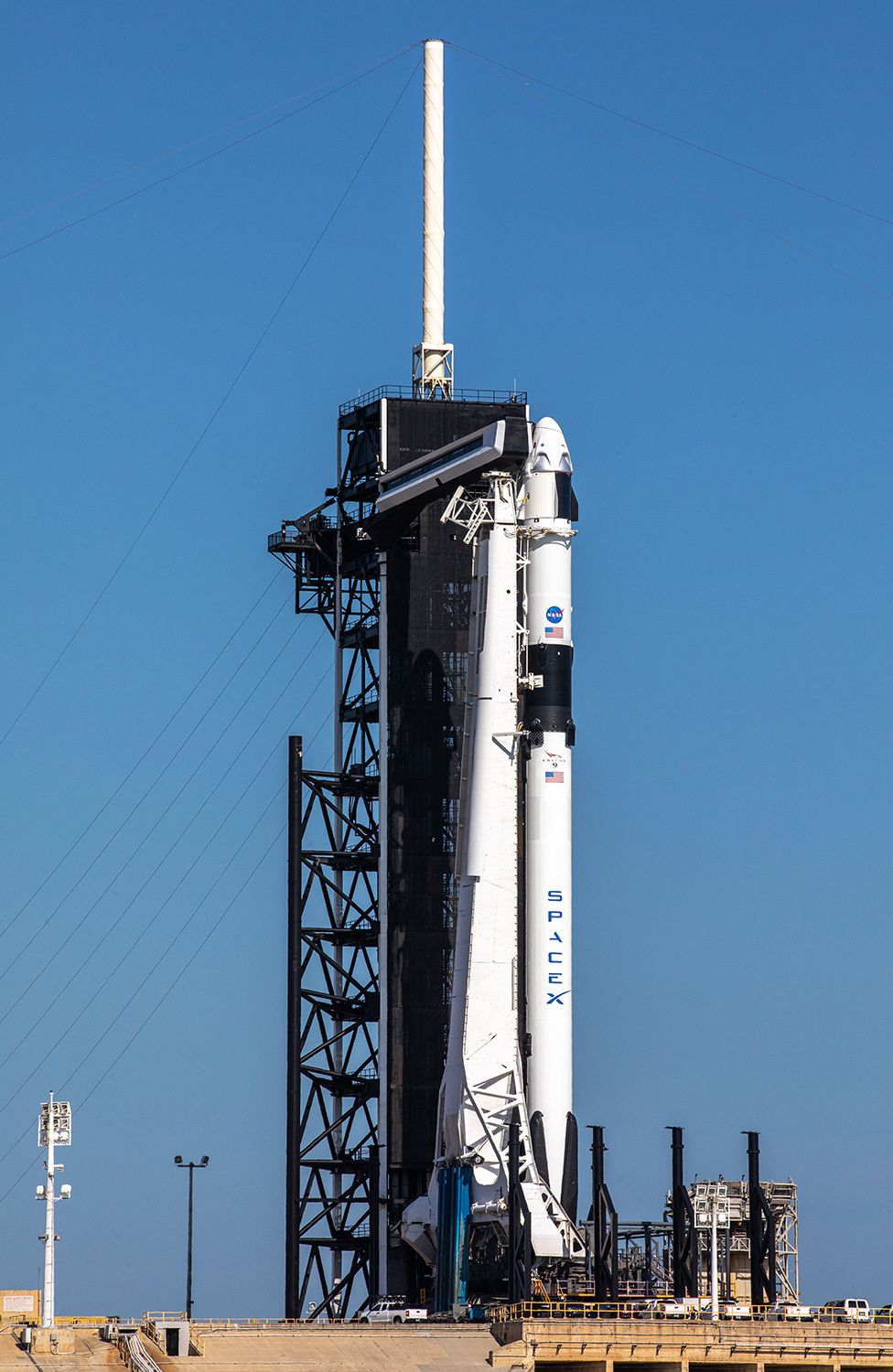SpaceX and NASA are to carry out the first manned mission to the International Space Station from American soil since 2011 on Wednesday, weather permitting.
NASA retired its Space Shuttle programme in 2011 in order to focus its resources on longer-range manned missions to the Moon or Mars.
Since that time it has been relying on Russia’s Soyuz launchers to deliver astronauts to the space station.
But it also created the private-sector Commercial Crew programme in 2010, under which it commissioned SpaceX and Boeing to develop a manned orbital delivery capability.

Dress rehearsal
SpaceX has carried out 85 successful test launches of its Falcon 9 family of rockets since 2010.
Doug Hurley and Bob Behnken are set to launch into orbit on a SpaceX Crew Dragon rocket at about 9:30 p.m. BST, if weather conditions are favourable.
If not, the plan is to try again the following Saturday.
Hurley and Behnken carried out a dress rehearsal of the launch last weekend, donning their spacesuits and walking out to a Tesla electric vehicle, which drove 6km to Launch Complex 39A at the Kennedy Space Centre in Florida.
They then rode to the top of a service tower, walked across the access arm and entered the Crew Dragon capsule.

Crew Dragon
The Crew Dragon unit is to be lifted into orbit atop a reusable Falcon 9 rocket, which is designed to return to land on an automated barge in the Atlantic while the capsule continues into space.
The trip into orbit lasts only about 10 minutes, but Hurley and Behnken will not dock with the ISS for about another 24 hours.
SpaceX uses the Cargo Dragon variant of the Dragon capsule to lift freight into orbit.

The company has also embarked on an ambitious satellite-based broadband internet access programme called Starlink.
SpaceX launched 60 Starlink satellites into orbit in March, bringing the total to 182.
It intends to launch 24 Starlink missions this year in order to reach its target of around 12,000 and eventually 42,000 satellites in orbit.






